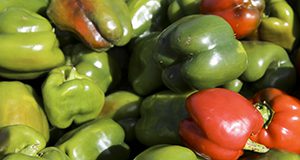Abstract
Bacterial spot, caused by three species of Xanthomonas, is a limiting disease problem on all peppers. This new 4-page fact sheet provides information on symptoms, causal organism and host resistance, disease cycle and epidemiology, and disease management (including cultural and sanitation practices, chemical control measures and the use of Actigard® in chile peppers). Written by Camille McAvoy, Pamela Roberts, and Jeffrey Jones, and published by the UF/IFAS Plant Pathology Department.
https://edis.ifas.ufl.edu/pp362
Unless otherwise specified, articles published in the EDIS journal after January 1, 2024 are licensed under a Creative Commons Attribution-NonCommercial-NoDerivs 4.0 International (CC BY-NC-ND 4.0) license.

